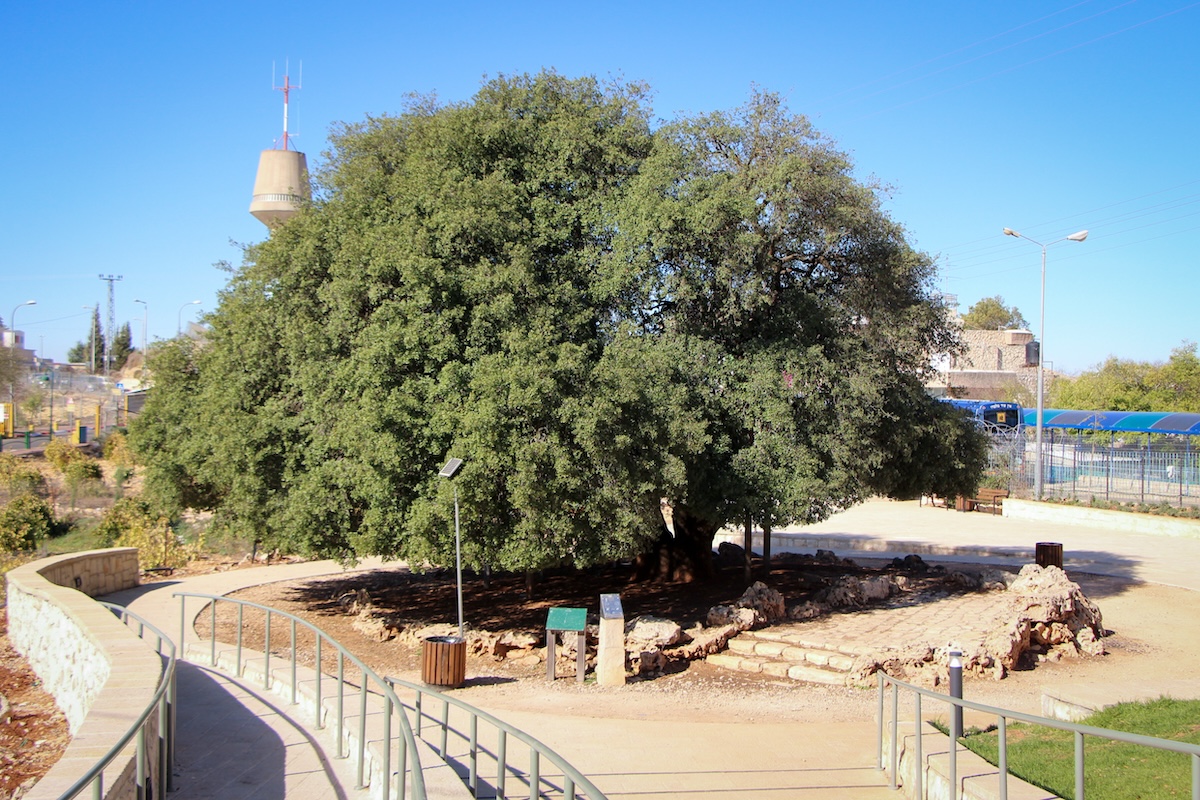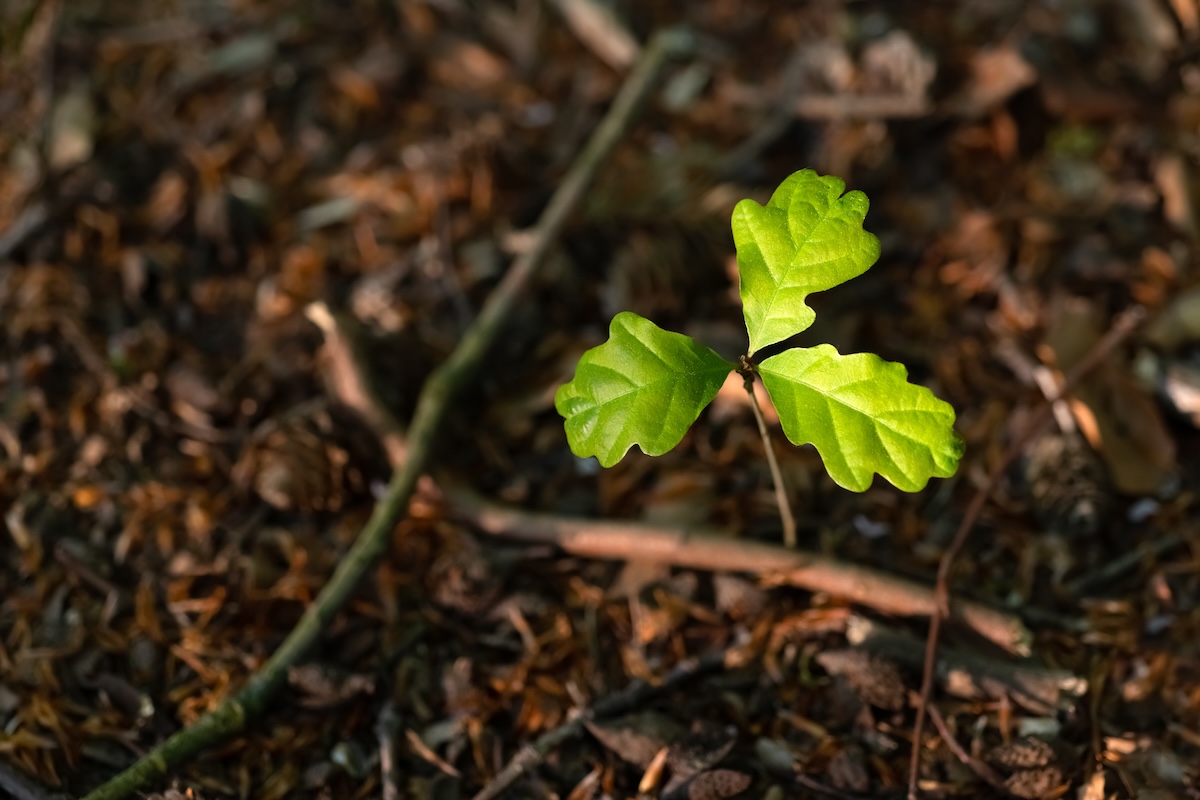Majestic oaks in Israel: Guardians of history and symbolism

Oaks (Hebrew: Allon/אַלּוֹן) are mentioned several times in the Bible, often symbolizing strength, stability and even longevity, with a lifetime of up to 700 years.
Here are a few notable references highlighting the significance of oak trees in biblical narratives:
· Genesis 13:18, Genesis18: The sacred site of the Oaks of Mamre, where God's covenant with Abraham unfolded a pivotal moment with far-reaching implications for the world, affirming that all humanity would find salvation through grace and faith.
· Genesis 35:4: Jacob buries foreign gods under an oak tree, symbolizing purity and reverence, to mark a break with idolatry.
· Judges 6:11-19: The angel of the Lord appears to Gideon under an oak tree, commissioning him to deliver Israel from the Midianites, to launch his journey to deliver Israel from oppression.
· 2 Samuel 18:9: Absalom, David's rebellious son, is caught in the branches of a great oak tree while fleeing from David's forces.
· Isaiah 61:3: In a metaphorical sense, believers are described as "oaks of righteousness," planted by the Lord to display His Glory. We are encouraged to be as strong as oaks.
The Spirit of the Lord GOD is upon me, because the LORD has anointed me to bring good news to the afflicted; He has sent me to bind up the brokenhearted, to proclaim liberty to captives and freedom to prisoners; to proclaim the favorable year of the LORD and the day of vengeance of our God; to comfort all who mourn, to grant those who mourn in Zion, giving them a garland instead of ashes, the oil of gladness instead of mourning, the mantle of praise instead of a spirit of fainting. So they will be called oaks of righteousness, the planting of the LORD, that He may be glorified” (Isaiah 61:1-3)
Amid the current turmoil of war and mourning gripping the nation of Israel, this profound call to set the captives free resonates even more deeply: We are God's cultivation, firmly rooted as oaks of righteousness, intended to illuminate the Lord’s glory and attract others to Him. Throughout our lives, we broadcast good news, announcing the arrival of the Messiah’s favor to all who cross our paths.

The oak tree is among the most common and dominant trees in Israel. They thrive in all regions with sufficient rainfall and even though Israel lacks botanical forests, they still reign supreme.
Among the approximately 300 oak species worldwide, Israel hosts three: the Holm Oak; the Tabor Oak; and the Kermes Oak. Additionally, two more species from this family thrive in the northern Hermon region: The Lebanon Oak and the Pedunculate Oak.
It is interesting to note that the durable wood of the Tabor Oak is ideal for crafting beams and tools. Historically, it was extensively utilized for constructing boats, ships, and oars, as well as for fuel and cooking purposes. This high demand led to widespread deforestation over generations. Additionally, oak wood enhances the aging process of wine, making it a preferred material for crafting wine barrels even today.
Prominently featured in the Keren Kayemeth LeIsrael (KKL) reforestation initiative, the Tabor Oak relies on wind pollination, with its heavy seeds, the acorns, not dispersing widely. As a result, they are commonly found near the parent tree, where they attract animals, particularly jays, that aid in spreading them over considerable distances. This process facilitates the growth of new oak trees in the area, providing sustenance for numerous wild animals that feed on acorns.

The primary mission of the Israeli Oaks Association is to identify, measure and register the location of all oak trees in Israel, both wild and planted, a testament to the high regard in which these remarkable trees are held.
“To bring broad public recognition of the historical importance of oaks in Israel’s natural ecology and to establish the oak as Israel’s (…) The oak has a potential longevity of hundreds of years, the equivalent of between six and fifteen human generations. The oak is a symbol of continuity between generations, continuity between people and the land where they live. Oak trees can form a binding link between Israel and the Diaspora and a tangible symbol of care for the continuity of the eco-environment of this land.”
Indeed, their resilience has been demonstrated in various climate scenarios, such as hurricanes, water and air droughts. The tree's survival hinges upon its root system, which rapidly develops from the acorn, prioritizing underground growth for moisture. Initially, minimal growth occurs above ground as the taproot extends deep. Once firmly rooted, the tree's focus shifts to lush foliage and above-ground expansion.
Another distinctive feature is that despite losing their leaves in winter or being cut down to the stump, these fascinating oak trees manage to survive: in spring, life returns, leaves reappear, and new branches emerge from the stump.
Throughout history, the "tree" of the people of Israel has faced countless threats to its survival, facing an onslaught of adversaries. However, after each calamity, both the people and the land have experienced resurgence and renewal.

Today, with the return of the people of Israel to their ancestral homeland, the "tree stumps" of the land have come back to life. After ages of desolation, the land is now flourishing once more, fulfilling this potent promise of God.
“Therefore this is what the Sovereign Lord says: I swear with uplifted hand that the nations around you will also suffer scorn. But you, mountains of Israel, will produce branches and fruit for my people Israel, for they will soon come home. I am concerned for you and will look on you with favor; you will be plowed and sown, and I will cause many people to live on you—yes, all of Israel. The towns will be inhabited and the ruins rebuilt. I will increase the number of people and animals living on you, and they will be fruitful and become numerous. I will settle people on you as in the past and will make you prosper more than before. Then you will know that I am the Lord.” (Ezekiel 36:7-11)

The All Israel News Staff is a team of journalists in Israel.














